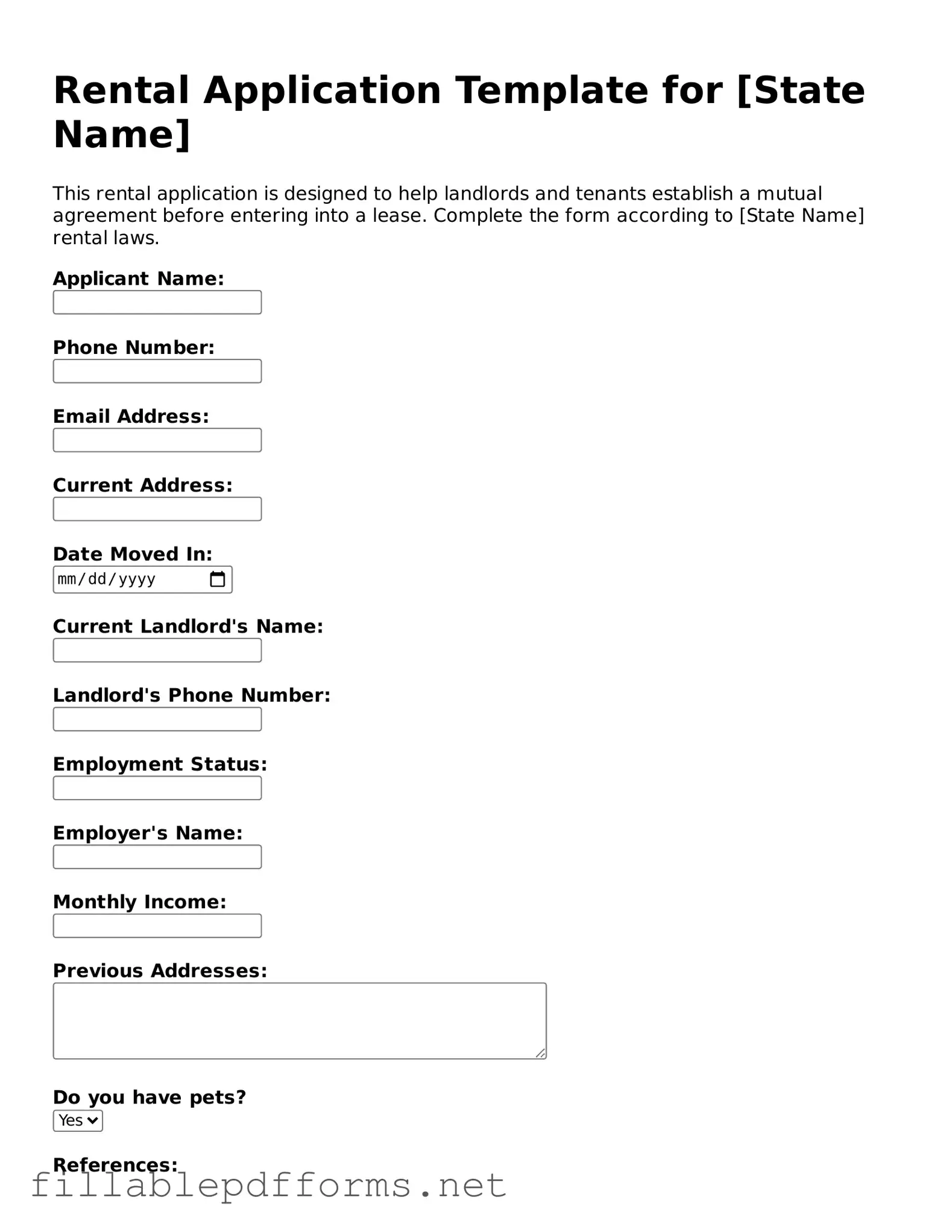When seeking a new place to call home, the rental application form serves as a crucial first step in the tenant selection process. This document typically collects essential information about prospective tenants, including their personal details, employment history, and rental history. Landlords often require applicants to disclose their income and provide references to ensure financial stability and reliability. Additionally, the form may include questions regarding pets, smoking preferences, and any special requests, allowing landlords to assess compatibility with their property’s rules. A well-structured rental application not only streamlines the evaluation process but also helps to protect the interests of both parties, fostering a transparent and informed rental experience. Understanding the various components of this form can empower applicants to present themselves effectively, thereby increasing their chances of securing the desired rental unit.
